Nate’s Adventures: Stories from Kahuku Point
Laysan Albatross Fledges
Native Coastal Restoration
By Nate Yuen | Reading time: 5 minutes
Native Coastal Strand Restoration at Kahuku Point
Ahu marking the boundaries between ahupuaʻa
I joined the North Shore Community Land Trust (NSCLT) in a service project to restore the native coastal strand and make the habitat more suitable for nesting mōli - Laysan Albatross - Immutabilis phoebastria.
There were so many of us that it did not take long to plant 700 baby plants!
Kalaeokaunaʻoa - Kahuku Point - is the northernmost point of Oʻahu off in the distance. An ahu - altar - marks the boundary between the ahupuaʻa - land divisions - of Hanakaʻoe to the west and Kahuku to the east.
In 2019, mōli hatched and fledged at Kahuku Point for the first time in decades. Our goal for the day was to replant the coast with native plants compatible with nesting albatrosses. The conservation plan for Kahuku Point calls for a predator proof fence to be installed to protect the eggs and checks from rats, mongeese, cats, dogs, and other predators.
We met at the Turtle Bay Hilton and walked along the coast to get to Kahuku Point. A number of signs have been posted to educate people about the noteworthy sites along the way. Ropes have been installed to guide visitors and keep them on the path. The paths keep people away from endangered plants and ʻiwi kūpuna — remains of elders — buried in the sand. Lots of beautiful pōhuʻehuʻe — the native beach morning glory — grow in the sand with purple flowers.
For the day's service project, a small hill was cleared of invasive species. Our work for the day was to plant trays of native ground cover to create the kind of habitat favorable to nesting albatrosses. Almost 30 people showed up for the work day at Kahuku point. It was a windy and overcast day which kept us cool.
Cute to see this toddler touch his first baby plant!
Tim Tybuszewski and Nick Kawelakai Farrant instructed us how to plant the native plants in the albatross habitat. Many thanks to AARP -- American Association of Retired Persons -- who donated 700 baby plants to plant in the albatross habitat.
Much of the work clearing invasive species was already done for us. All we had to do was pull out some of the remaining roots. There were lots of ʻilima, ʻākulikuli, pāʻū-o-Hiʻiaka, and nanea to plant.
Lots of enthusiastic volunteers, many from Hawaiʻi Pacific University, were a part of the work crew. We planted the baby plants within 18 inches of each other and gave the plants lots of water.
Our hope is to re-establish the native coastal strand and bring back the seabird colony.
Workdays at Kahuku Point are 9 am -12 pm on the 2nd Saturday of each month.
Join us for the next one! You can sign up by clicking here.

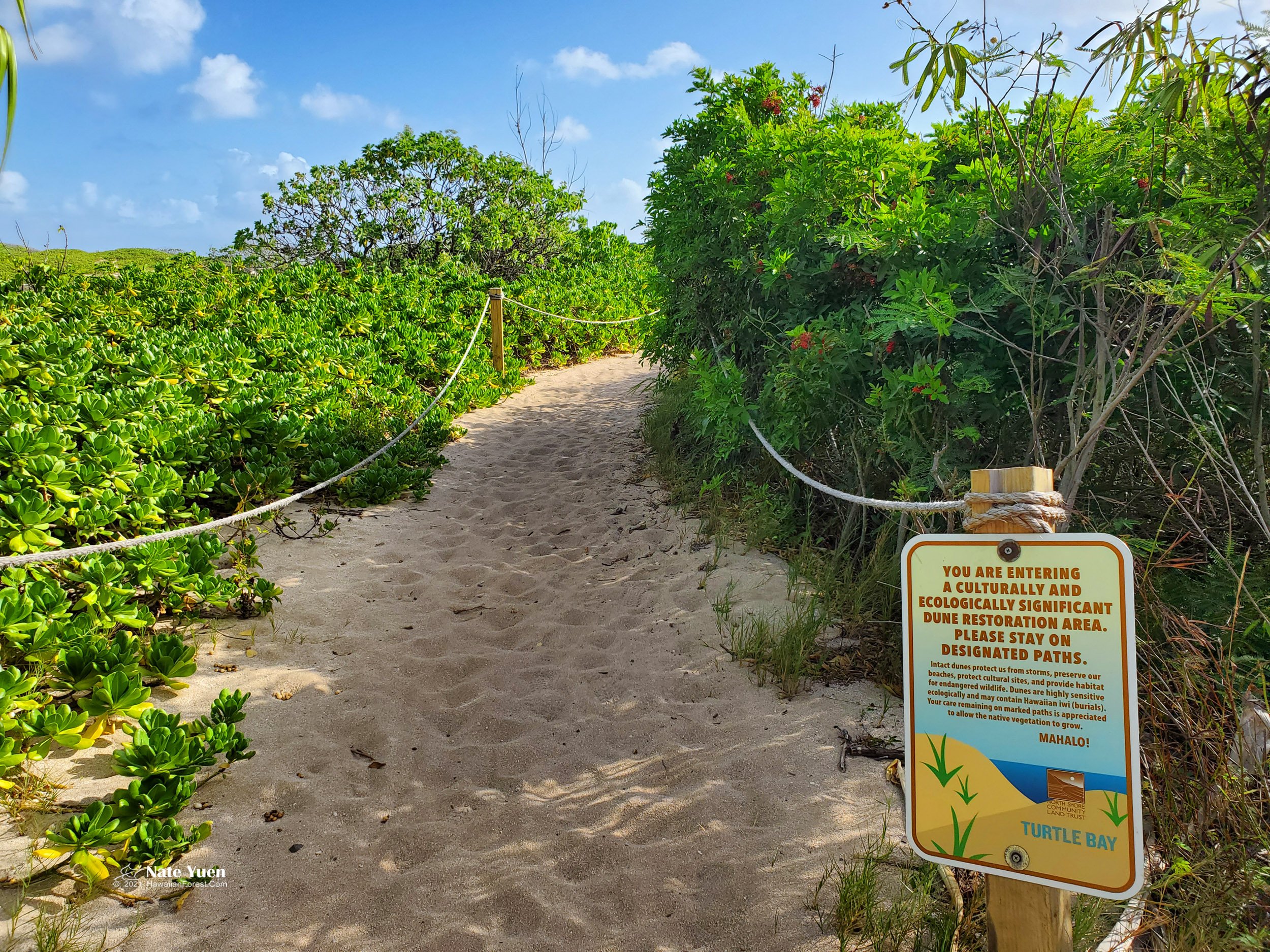
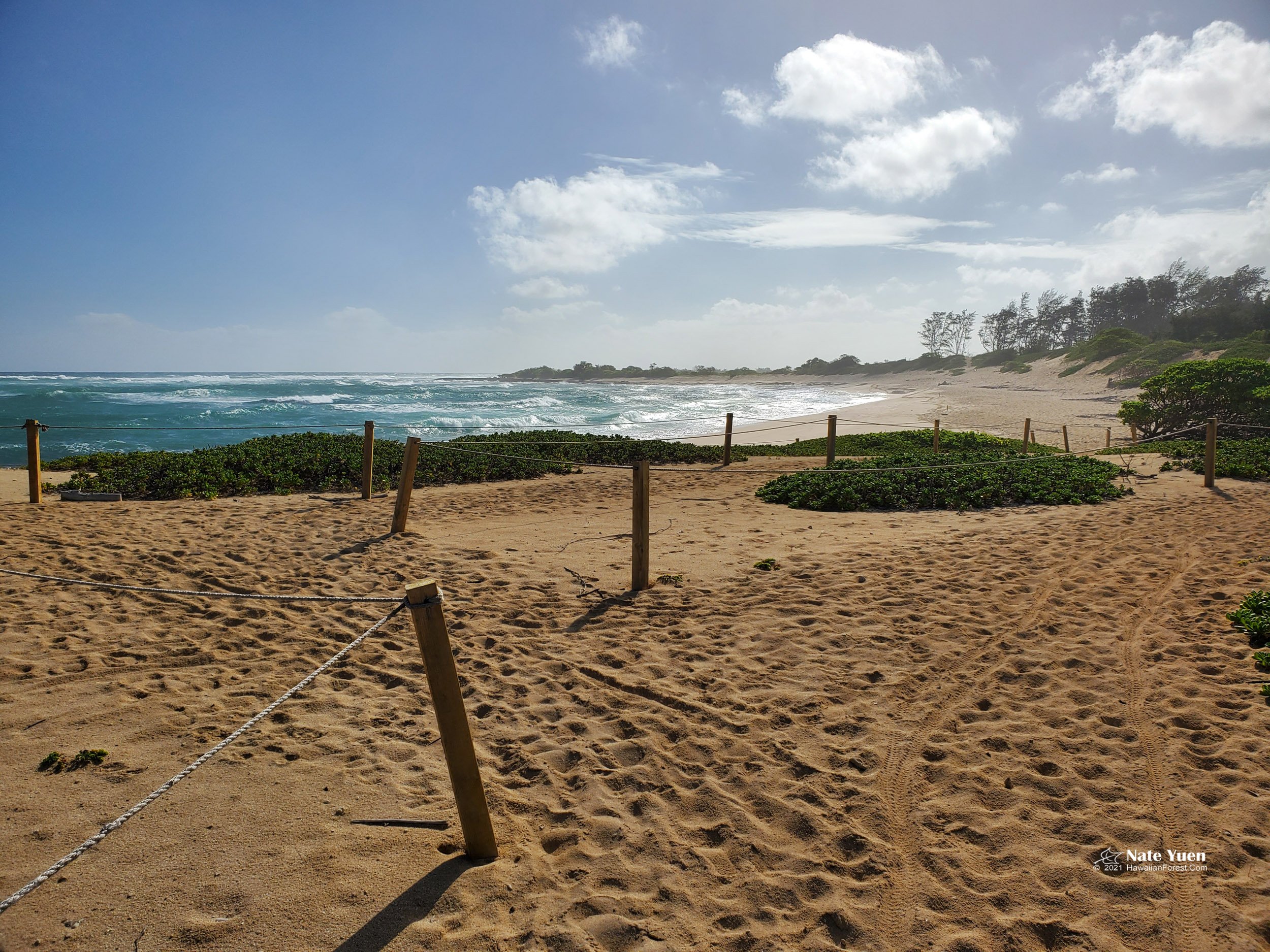

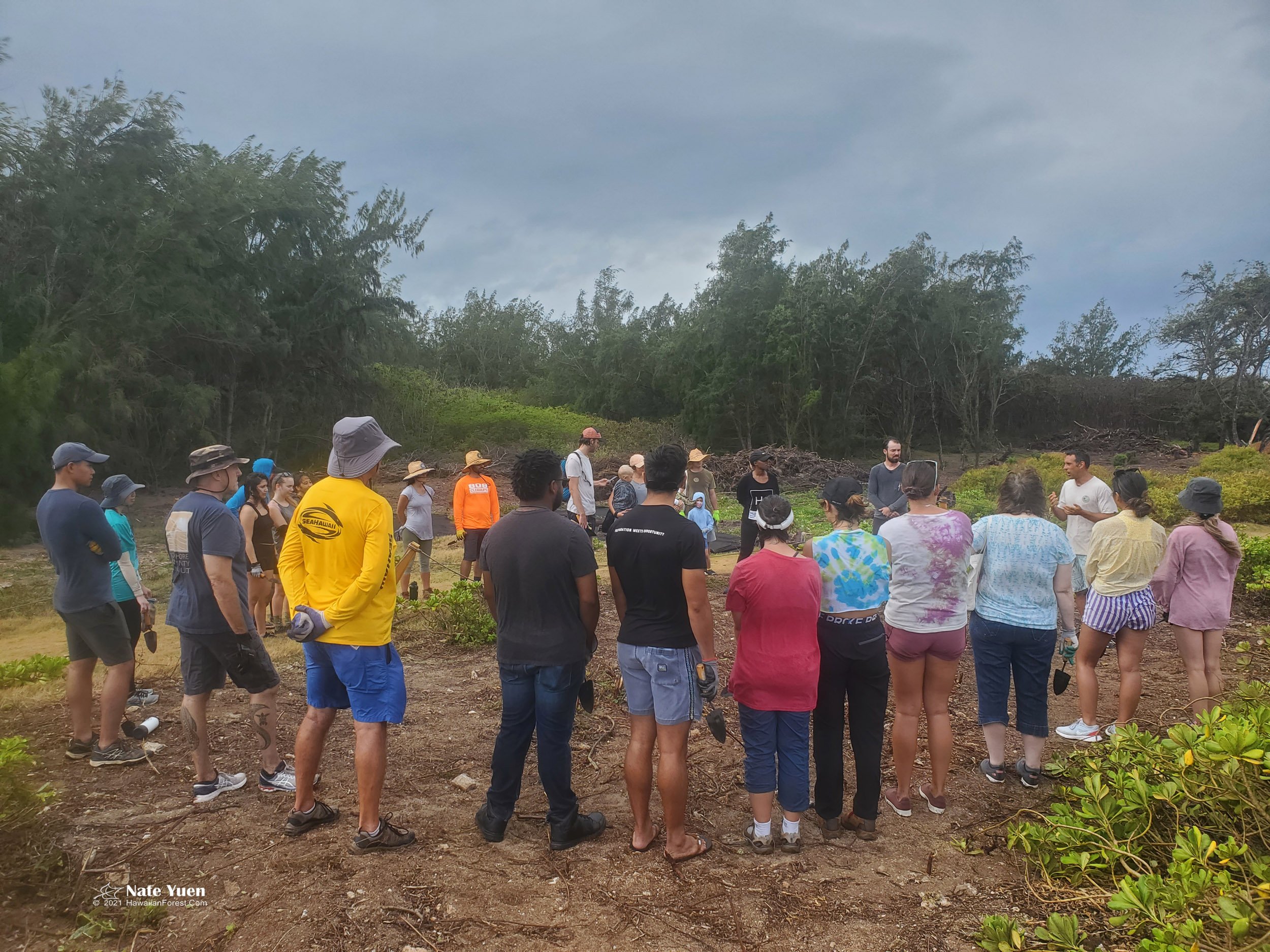
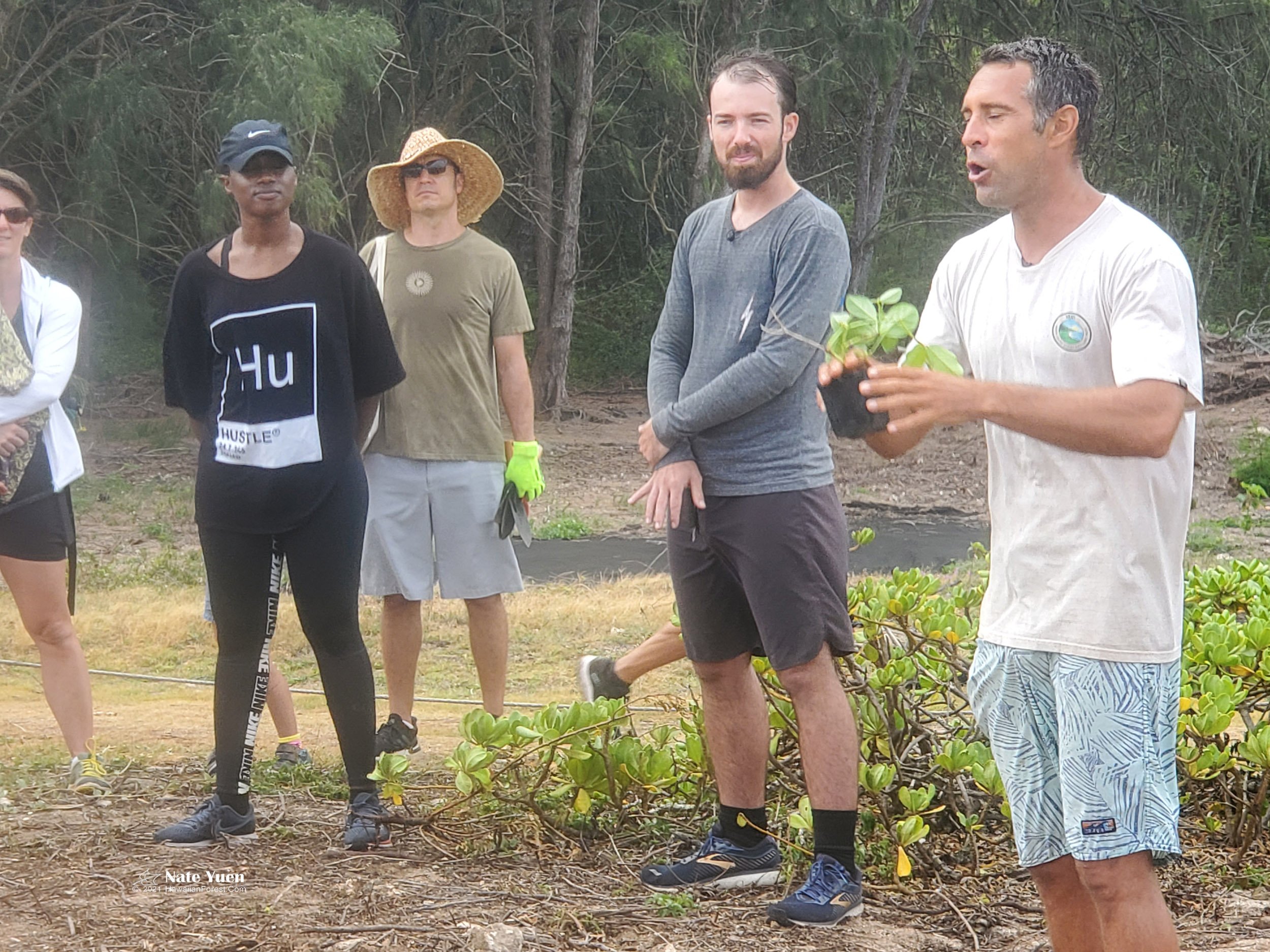
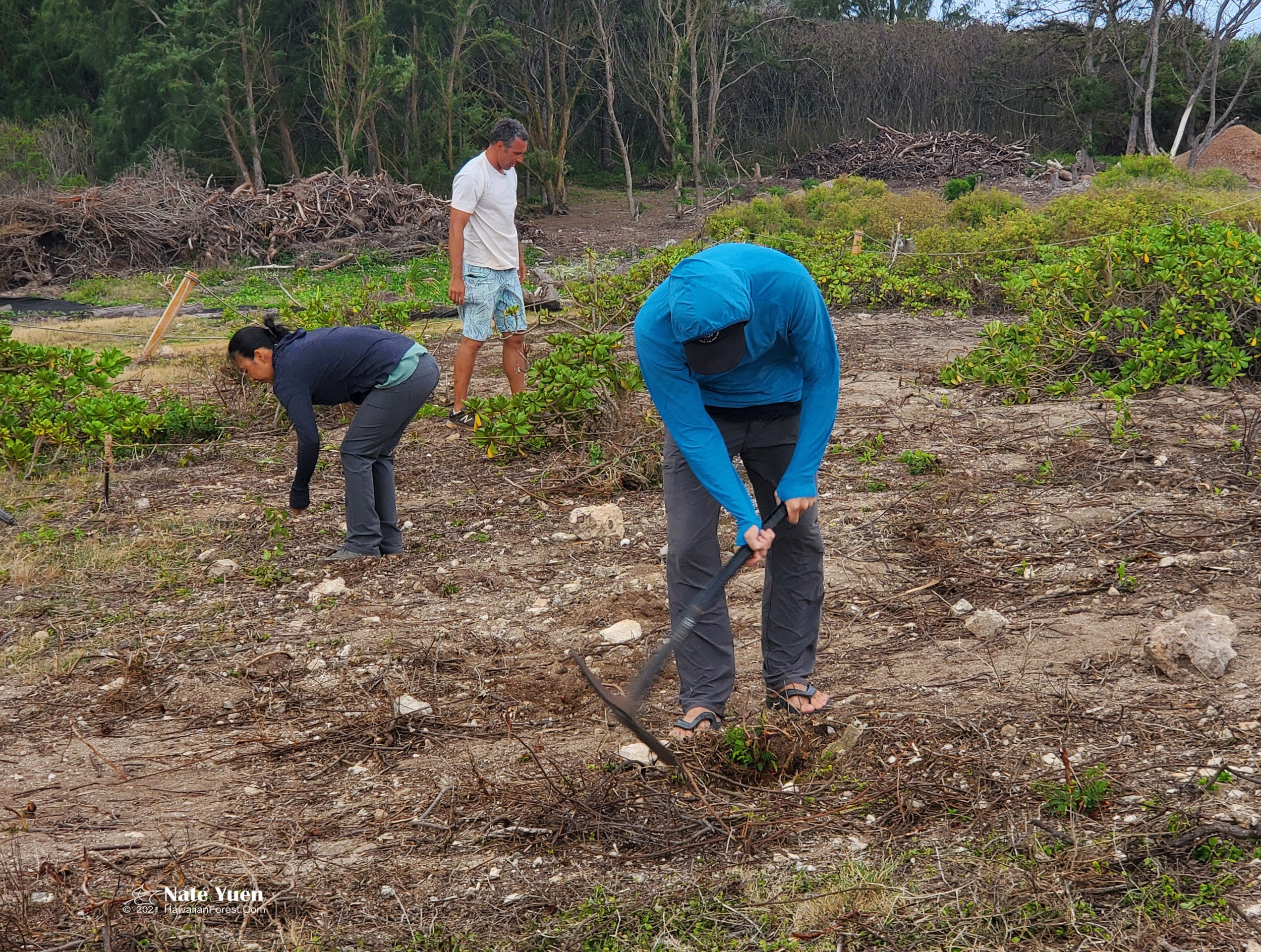


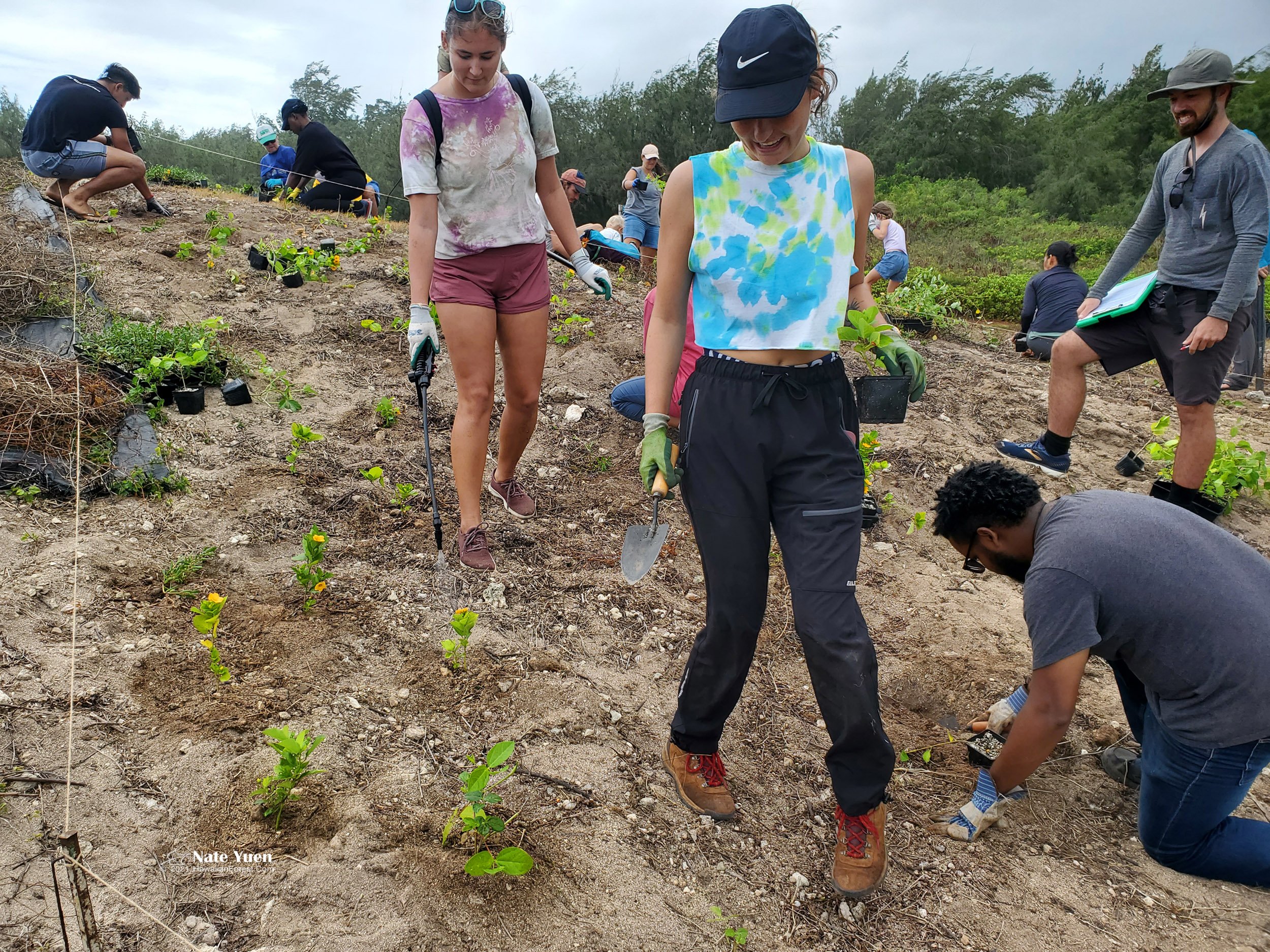
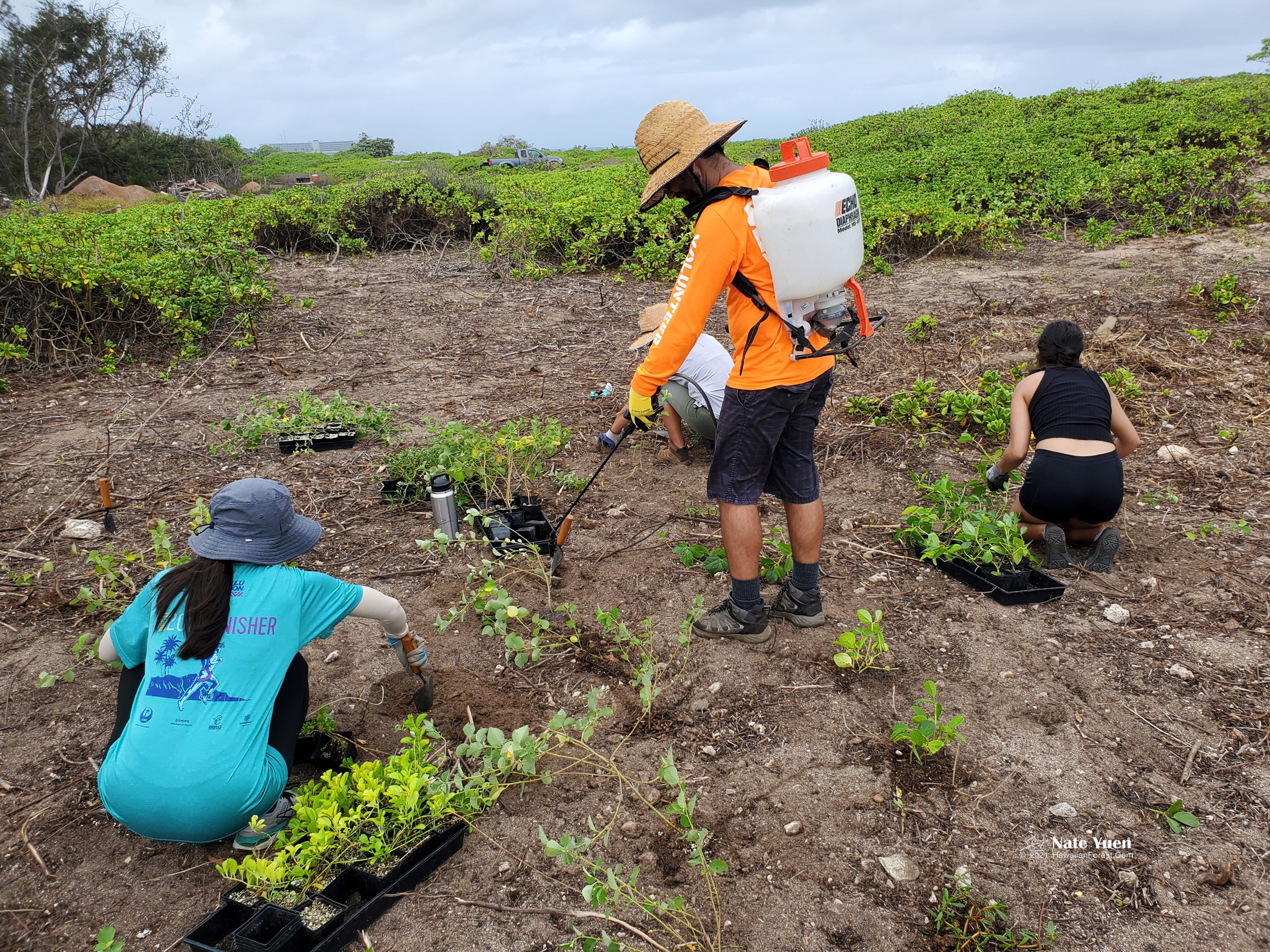
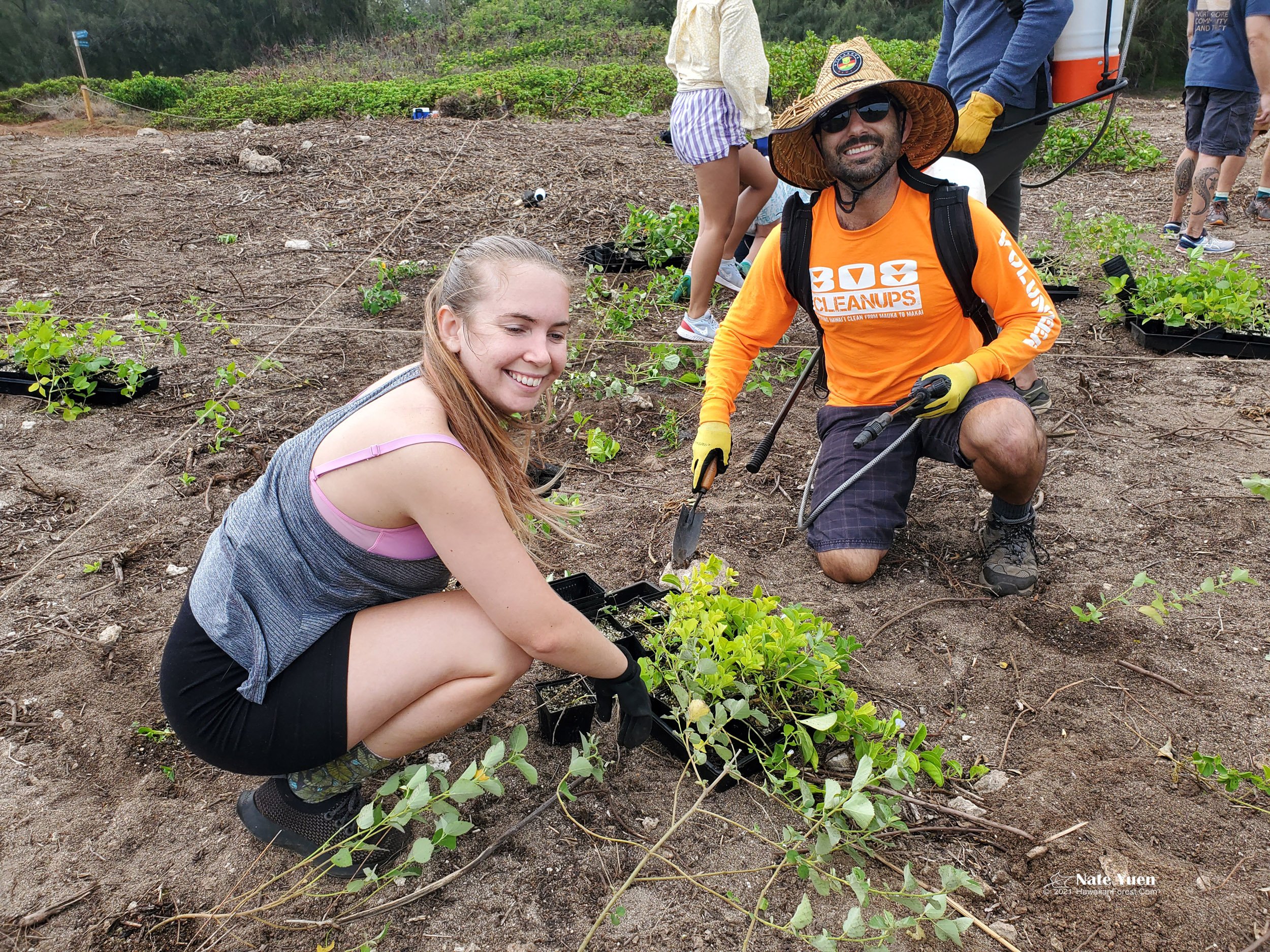
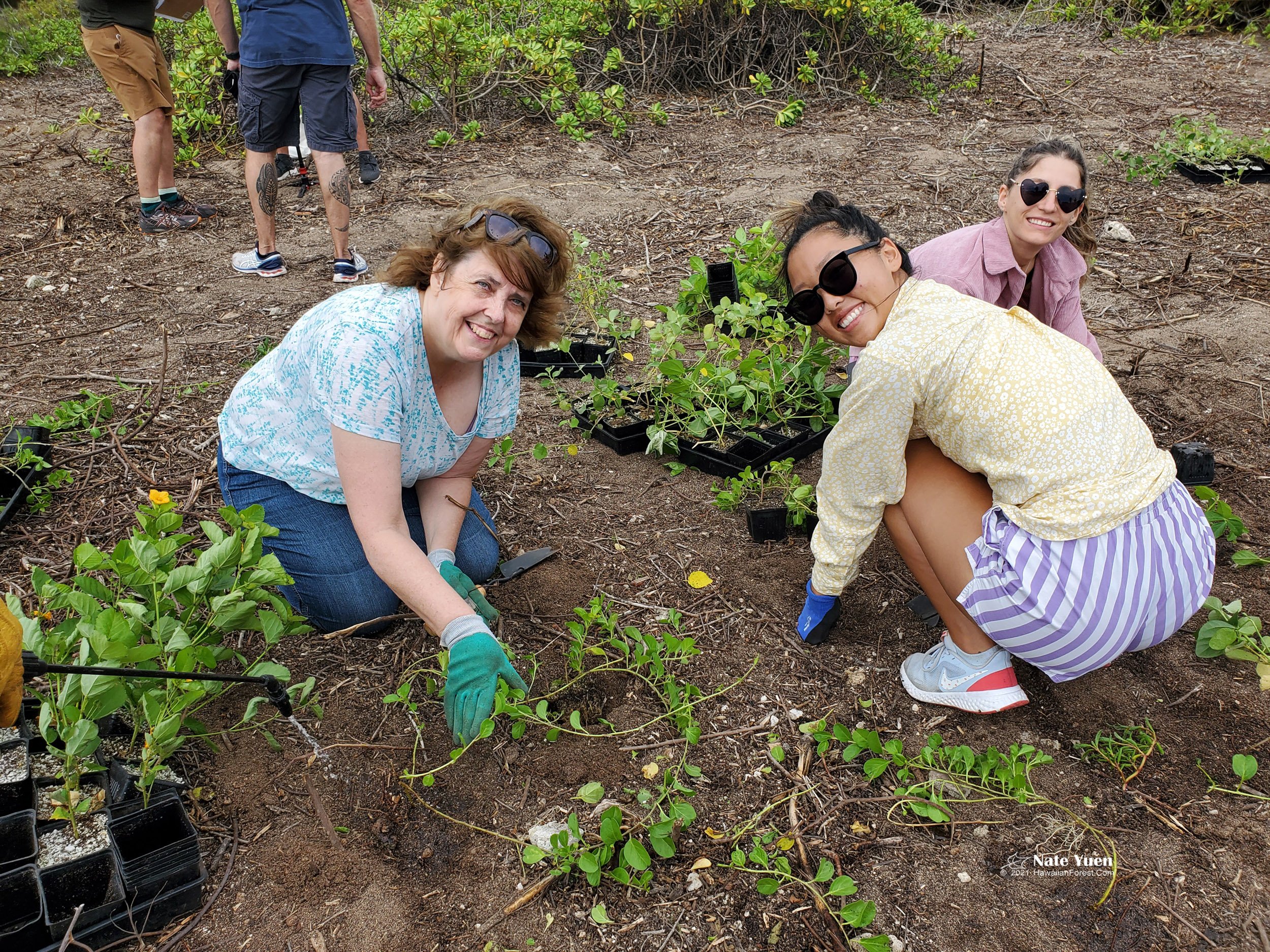
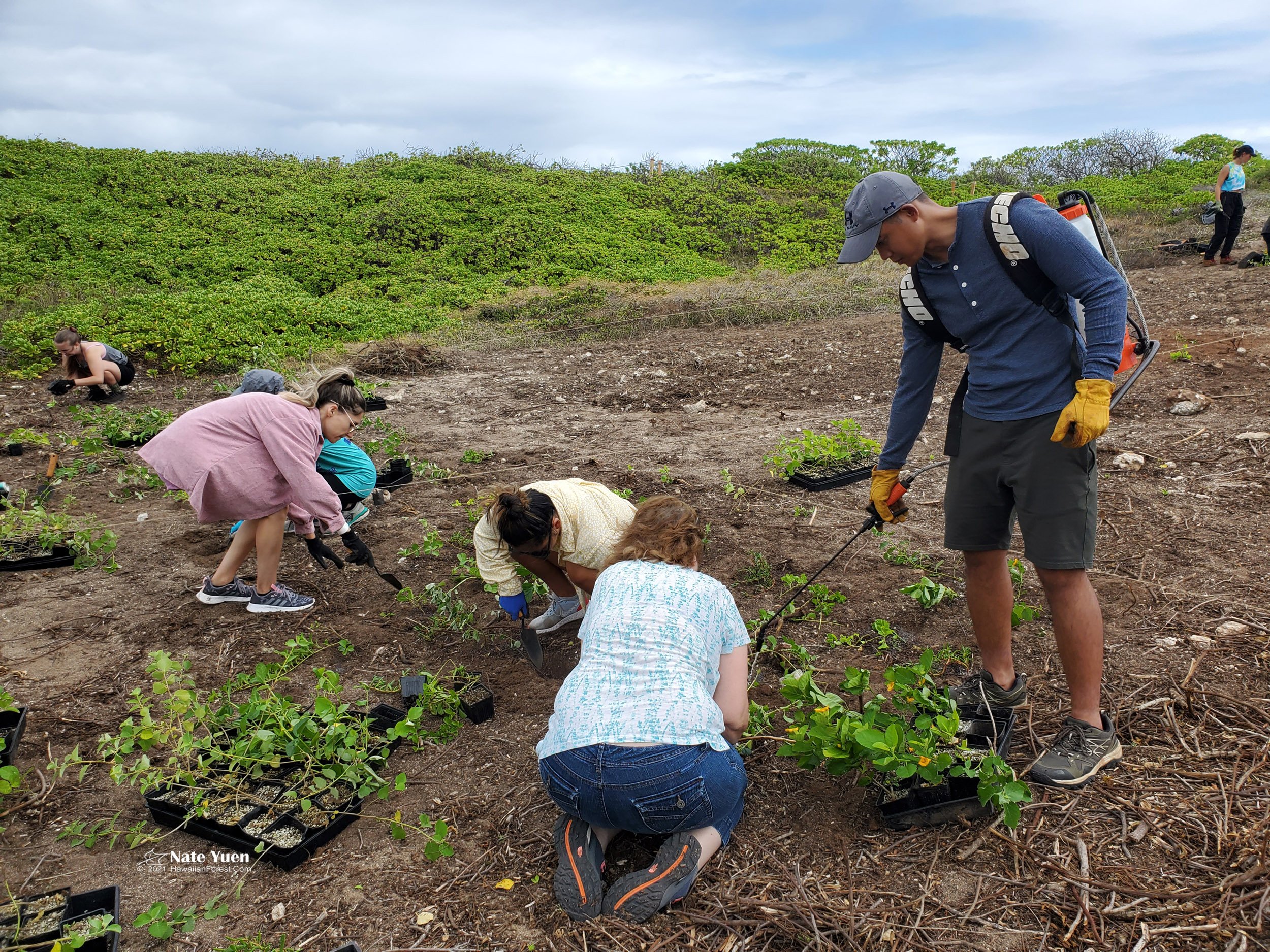
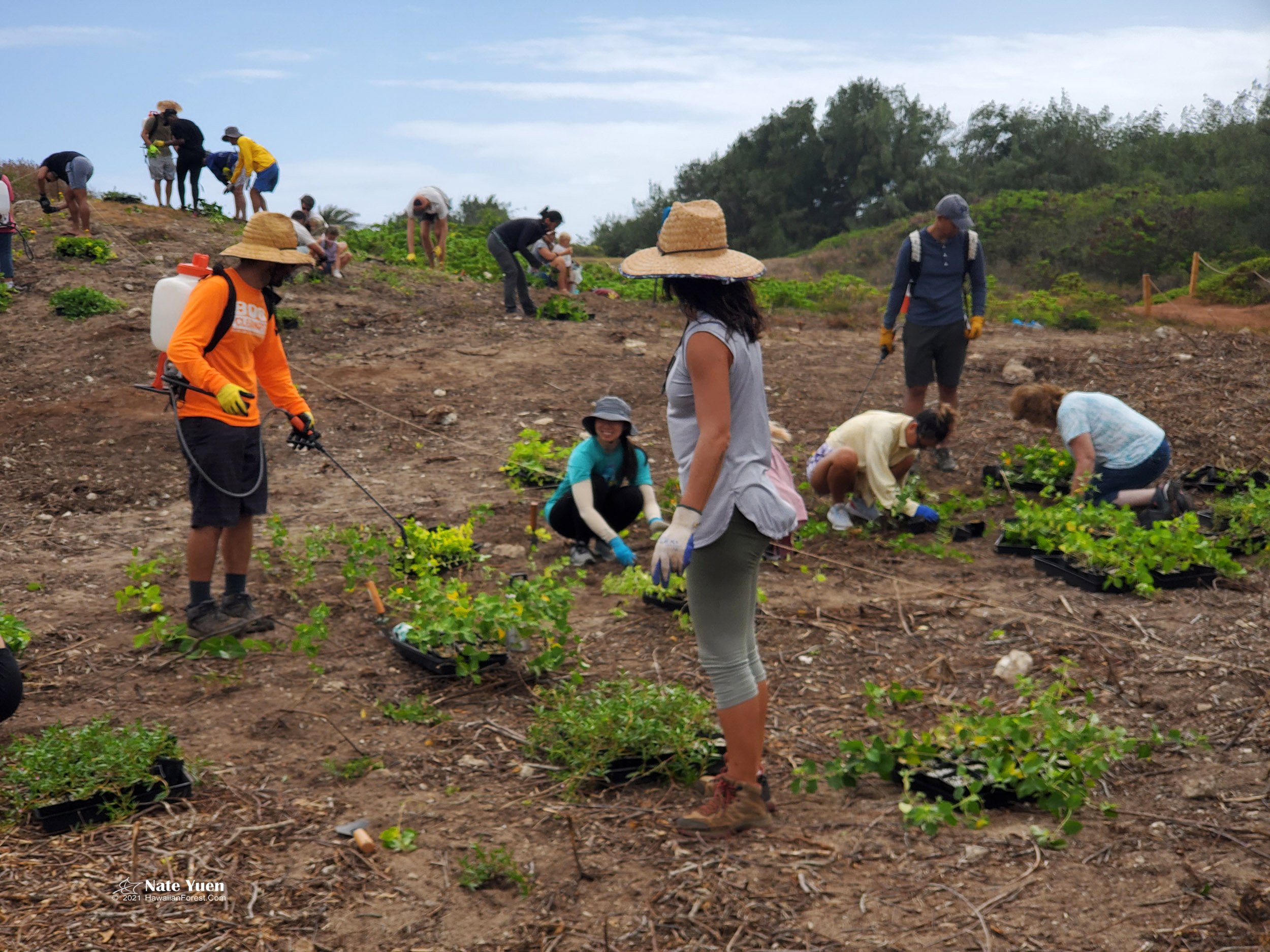

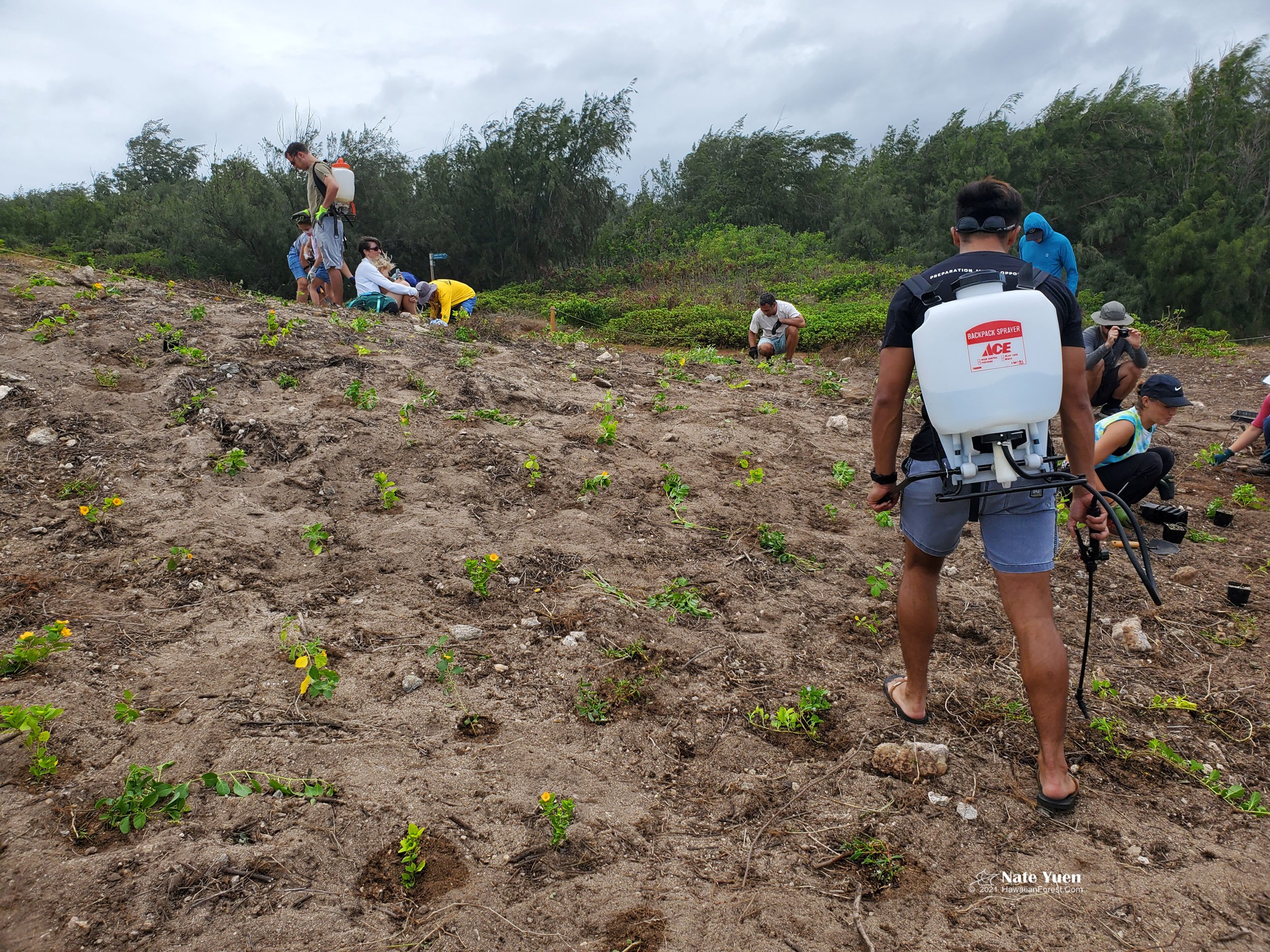
First Laysan Albatross Fledges at Kahuku Point in Decades
In 2017, people started to notice that mōli, or Laysan Albatrosse, began coming to Kahuku Point to nest. Then in 2019, the first moil (latin name Immutabilis phoebastria) were successfully raised and actually fledged. Each year since, mōli have returned in greater numbers to nest at Kahuku Point.
Historic records indicate that Laysan Albatrosses used to nest at Kahuku Point. But as development spread to the north shore of Oʻahu, the habitat was altered and invasive species proliferated. Invasive plants like haole koa and iron wood took over the landscape, and predators like rats, mongeese, cats, and dogs roamed the coastline unchecked. As a result, the eggs and chicks were easy prey, and so nesting ceased at Kahuku Point.
In 2015, work was started to restore the habitat at Kahuku Point. Ironwood trees were cut down, haole koa trees removed, and coastal sand dunes were cleared of the worst invasive species. Native coastal plants were planted in the sand dunes to create a habitat more favorable to nesting albatrosses. Considerable progress has been made to restore the native ecosystem at Kahuku Point.
Laysan Albatrosses are long-lived birds. The world's oldest known wild bird, a Laysan albatross named Wisdom, is 70 years old. Wisdom lives on Midway Atoll and hatched yet another chick in 2021.
The Laysan Albatrosses coming to Kahuku Point today are believed to be the offspring of seabirds hatched at Kahuku point decades ago. They imprinted on Kahuku Point as chicks and are now returning as adults.
Conditions at Kahuku Point are now more favorable, breeding is succeeding, chicks are fledging, and adults are returning!
The Laysan Albatrosses coming to nest at Kahuku Point are independent of the albatross translocation project at James Campbell National Wildlife Refuge (JCNWR), which is just 2 miles away from Kahuku Point. JCNWR is establishing a new seabird colony by taking seabird eggs from other parts of the Pacific that would be destroyed by sea level rise, and relocating them to JCNWR to hatch. The chicks imprint on the new seabird colony site and will establish a new colony at JCNWR.
Efforts to make conditions more favorable to nesting albatrosses are succeeding at Kahuku Point. Rat traps and feral animal round-ups are making a difference and the chicks are able to fledge. With more of the native plants and habitat being restored, the outlook for bringing back the seabird colony at Kahuku Point looks good.
A beautiful mōli with newly hatched baby!





